Camel coaxing ritual collection
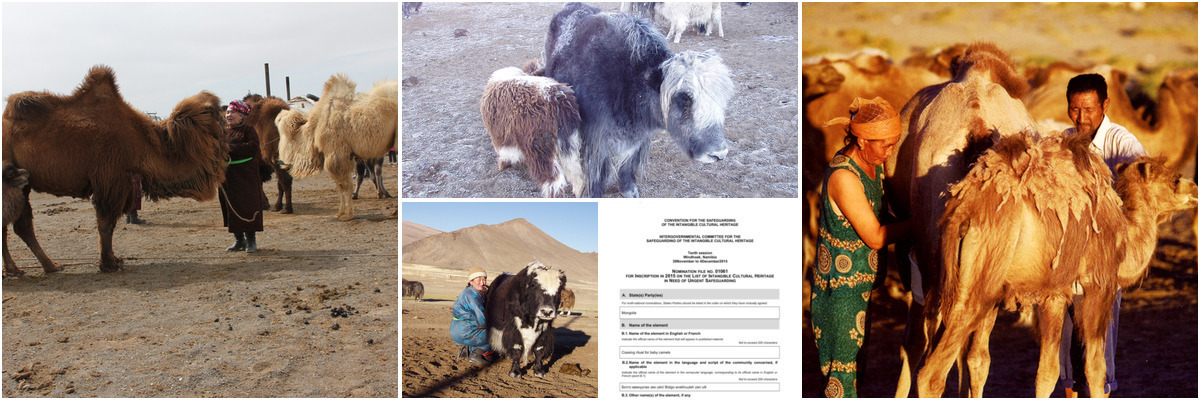
Metadata
identifier
cb9e0c34-13b1-423f-b208-333eab8b1e9f
type
Collection
coverage
Mongolia
description
Documents related to the “camel coaxing ritual”, accepted to the UNESCO List of Intangible Cultural Heritage in Need of Urgent Safeguarding, 2015. This collection includes photographs, a nomination video, and various other “ethnographic” documents. See UNESCO decision 6.COM 8.14 in ITH-11-6.COM-CONF.206-8+Corr.+Add.-EN.pdf.
From the description of the ritual submitted to UNESCO: Mongol herders perform the coaxing ritual to encourage a female camel to accept a new-born calf or to adopt an orphan. The mother is tied close to the calf and a singer begins a monotone song accompanied by gestures and chanting. The coaxer changes the melody depending on the mother’s behaviour, which may be initially aggressive, and slowly coaxes her into accepting the calf. Performance of the ritual takes place at dusk or twilight and requires great skill in handling camels, as well as talent for singing and musical skill on the horse head fiddle or flute. Most herdswomen engage in techniques and methods of coaxing, but professional coaxers may be enlisted to undertake the ritual when a singer or musician is unavailable within the local community. The ritual acts as a symbolic medium for creating and maintaining social ties among individual nomadic families and their community. It is transmitted from parents and elders to youth through home tutoring. Changes in the social and cultural environment, however, have negatively affected its viability. Today, motorcycles are preferred to camels as a means of transportation, and increasing migration to urban centres has diminished the number of young herders. The number of cultural bearers is therefore decreasing rapidly as new generations lose touch with their traditional ties to pastoral husbandry.
date
2015
language
English
Mongolian
Items
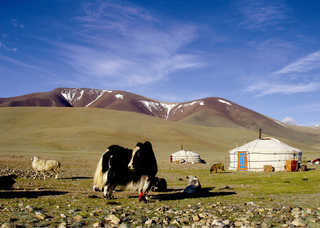
4015
Boldbaatar, Yu.
Livestock near a herder
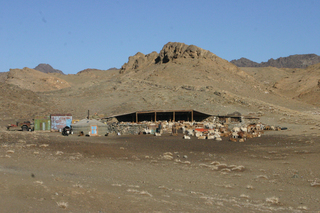
4016
Boldbaatar, Yu.
Livestock near a herder
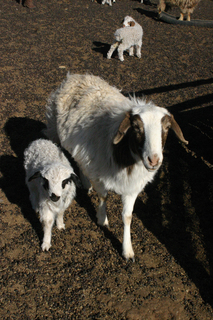
4017
Boldbaatar, Yu.
Adopt an orpan
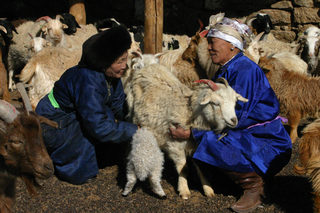
4018
Boldbaatar, Yu.
Coaxing a baby sheep female goat
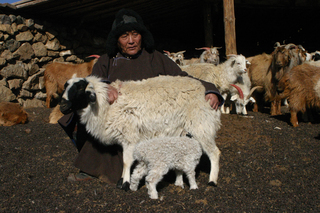
4019
Boldbaatar, Yu.
Coaxing a baby by female sheep
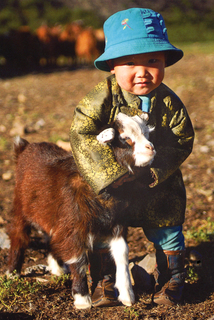
4020
Oktyabri, D.
Herder girl

4021
Boldbaatar, Yu.
Herder boy
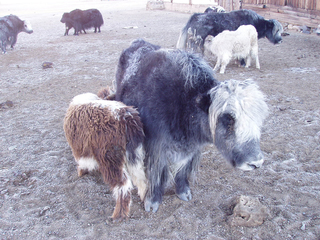
4022
Boldbaatar, Yu.
A female yak suckling a orpan

4023
Boldbaatar, Yu.
A woman milking a cow
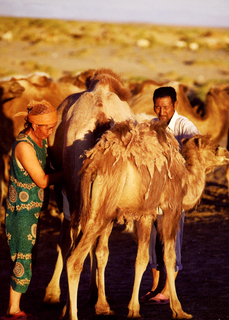
4024
Oktyabri, D.
A woman milking a camel
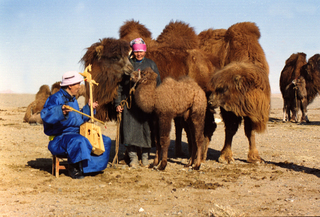
6127
Boldbaatar, Yu.
Coaxing ritual for the camel’s calves (Bayanlig Soum, Bayankhongor Province)

6128
Boldbaatar, Yu.
Getting the orphan calf and the mare-camel without a calf together for coaxing (Khankhongor Sooum, Umnugobi Province)

6130
Boldbaatar, Yu.
Using the melody of Morin Khuur for coaxing the mare-camel and orphan calf (Khankhongor Sooum, Umnugobi Province)

6131
Boldbaatar, Yu.
The mare-camel is accepting the orphan calf (Khankhongor Sooum, Umnugobi Province)

6132
Boldbaatar, Yu.
Coaxed mare-camel and its accepted new calf (Khankhongor Sooum, Umnugobi Province)

Camel coaxing ritual (video)
Boldbaatar, Yu.
Short documentary video accompanying Mongolia’s nomination of the Camel coaxing ritual to the UNESCO List of Intangible Cultural Heritage in Need of Urgent Safeguarding, 2015.
subject: Camel coaxing, UNESCO, Rituals, Music

9402
Boldbaatar, Yu.
The coaxing ritual for baby camels-1

9403
Boldbaatar, Yu.
The coaxing ritual for baby camels-2

9404
Boldbaatar, Yu.
Using the melody of Morin Khuur for coaxing the mare-camel and orphan calf -1 (Mandal Ovoo soum, Umnugovi Province)

9405
Boldbaatar, Yu.
Preparing for the coaxing ritual for baby camels - 3 (Mandal Ovoo soum, Umnugovi province)

9406
Boldbaatar, Yu.
The mare-camel is accepting the orphan calf - 1 (Khankhongor Sooum, Umnugobi Province)

9407
Boldbaatar, Yu.
Coaxed mare-camel and its accepted new calf (Khankhongor Sooum, Umnugobi Province)
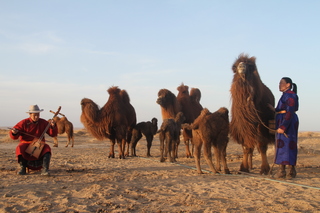
9408
Boldbaatar, Yu.
Using the melody of Morin Khuur for coaxing the mare-camel and orphan calf -2 (Khankhongor)
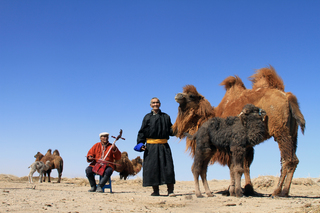
9409
Boldbaatar, Yu.
The mare-camel is accepting the orphan calf - 2 (Khankhongor Sooum, Umnugobi Province)

9410
Boldbaatar, Yu.
The coaxing ritual for baby camels - 4 Coaxed mare-camel and orphan calf
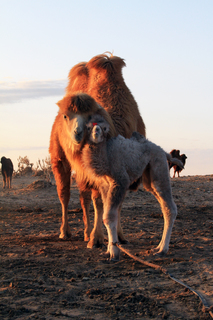
9411
Boldbaatar, Yu.
The mare-camel and accepted new calf

09565-EN
Nomination form. UNESCO List of Intangible Cultural Heritage in Need of Urgent Safeguarding, Nomination file No. 00548, “Coaxing ritual for camels” (Mongolia).
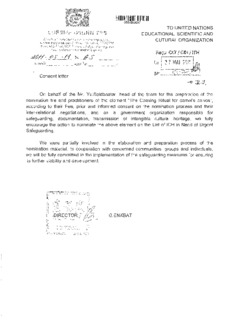
11655
Consent of Communities. UNESCO List of Intangible Cultural Heritage in Need of Urgent Safeguarding, Nomination file No. 00548, “Coaxing ritual for camels” (Mongolia).
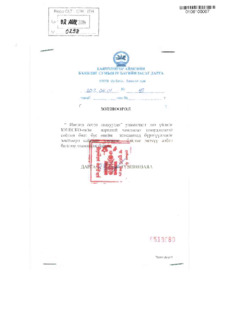
26801
Mongolia
Consent of communities. UNESCO List of Intangible Cultural Heritage in Need of Urgent Safeguarding, Nomination file No. 01061, “Coaxing ritual for camels” (Mongolia).
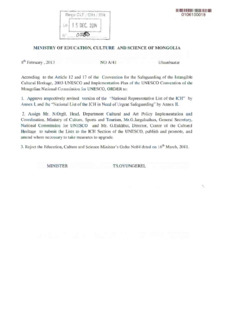
30181
Mongolia
ICH Inventory. UNESCO List of Intangible Cultural Heritage in Need of Urgent Safeguarding, Nomination file No. 01061, “Coaxing ritual for camels” (Mongolia).
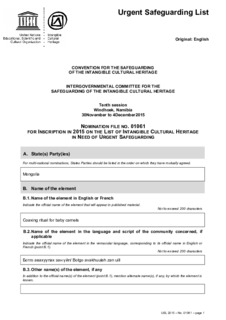
30374-EN
Mongolia
Nomination form. UNESCO List of Intangible Cultural Heritage in Need of Urgent Safeguarding, Nomination file No. 01061, “Coaxing ritual for camels” (Mongolia).

ITH-11-6.COM-CONF.206-8Corr.Add.-EN
UNESCO Intergovernmental Committee for the Safeguarding of the Intangible Cultural Heritage
Withdrawal of the file “Coaxing ritual for camel caves”.

ITH-15-10.COM-10 EN
UNESCO Intergovernmental Committee for the Safeguarding of the Intangible Cultural Heritage
Decision to inscribe the “camel coaxing ritual” on the UNESCO List of Intangible Cultural Heritage in Need of Urgent Safeguarding.